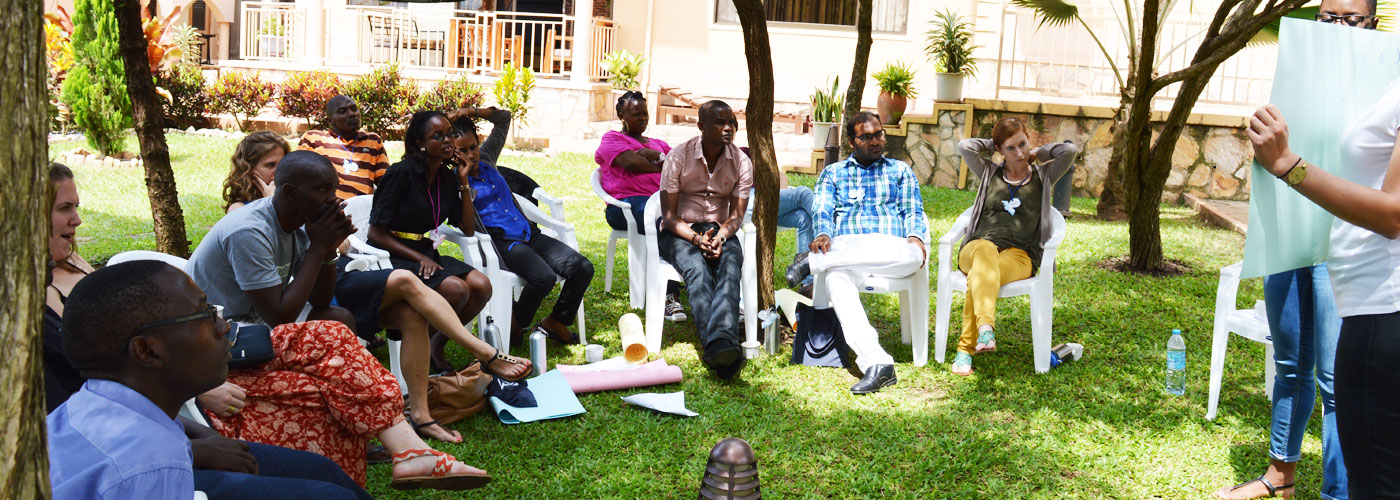In my time at Unreasonable Institute, I’ve observed there are times when it’s really hard for our team to make decisions. When controversial decisions are on the table, people disagree on what to do and things get heated, often involving two people trying to out-stubborn the other. This hurts the company and leaves everyone feeling worn out and disconnected. If you are an entrepreneur leading a team, no matter the size, I imagine you resonate with this struggle. I’ve written this post to share a framework developed by Unreasonable Mentor Will Seamans that can help any entrepreneur make good decisions and get the buy-in from your team along the way.
A good decision happens when the people impacted by the decision are involved, even though they’re not necessarily decision-makers. Tweet This Quote
Will is a remarkable coach to us in building internal processes that produce results while respecting all human beings involved. He’s the former Chief of Staff of Teach For America, where he worked for over eight years before transitioning to an engineering company with the goal of making it one of the best places to work in the country. He’s one of the most skilled facilitators and leaders I’ve ever met. He taught us a few principles about decision-making that have revolutionized how we do it at Unreasonable Institute.
“First, what makes a good decision?”
In all our time at Unreasonable Institute, we had never answered that question, but this was the first question Will asked us. We agreed that a good decision is made up of the following components:
- Multiple opinions are considered before making the decision.
- The people impacted by the decision are involved (though not necessarily decision-makers).
- There’s explicit buy-in into the decision-making process.
- There’s space and voice for those who need it.
- How the decision is going to be made is communicated ahead of time.
- The decision aligns with our values.
A good decision aligns with your values. Tweet This Quote
The Four Kinds of Decisions
Having understood a good decision, Will then explained that there are four kinds of decisions:
- Autocratic, where one person makes the decision on their own
- Consultative, where one or more people make the decision, but with input from others who aren’t making the decision
- Democratic, where all members of a group make a decision by majority vote
- Consensus, where no one in a group has strong, justifiable objection to a decision (subtly different from 100% agreement on a decision).
Here’s what each of these decision types mean and when to use them:
1. Autocratic Decision
This happens when one person makes a decision for the entire group on their own. It should be used in the following ways:
- In emergencies or when decisions need to be made extremely quickly
- When other people don’t care. For example, if a group of us are deciding where to go out for dinner and three of us say, “We’re fine with anything. Steve, you pick since you have a peanut allergy.”
- When one person holds all the expertise and no one has anything else to bring to the table. For example, amidst lay people, a doctor may decide how to take care of someone who has just had a seizure completely on their own and without anyone else’s input.
An autocratic decision should happen in emergencies, when others don’t care, or when one person holds all expertise. Tweet This Quote
2. Consultative Decision
This occurs when one person decides, but with input from others. A consultative decision can also be made by a small group with input from others outside the group. This small group will decide within themselves either democratically or by consensus. It should be used in the following scenarios:
- When one person holds the majority of expertise, but perhaps does not have it all. For example, a neurologist might consult with a radiologist to help understand the results of scans, before she makes a diagnosis and determines the treatment plan.
- When no one on a team holds more expertise than anyone else. For example, a hiring committee might consult the outside team on who to ultimately hire for a position, though they have no greater expertise in how to hire.
3. Democratic Decision
This is a decision made by majority vote. It should be used in the following two ways:
- When voice matters (either truly or because of politics). Board elections are a good example.
- When a decision affects everyone in a group / on the team.
Democratic decision-making should be used when voice matters or when a decision affects everyone. Tweet This Quote
4. Consensus Decision
This is when 100% of people in a group or on a team agree to move forward with a decision. Consensus does not mean that each person would have made the same decision independently. Rather, it means no one on the team can offer a justifiable objection to the path forward. It’s hard to arrive at consensus, but it generates the greatest buy-in into a decision. Thus, Will suggests reserving consensus for the most fundamental elements of an organization, like mission, values, strategic direction, and perhaps even firing and hiring.
- When a decision is so important that you can’t afford to have a lack of buy-in from anyone on the team. For example, two people need to arrive at a consensus to get married. It’s so important that both participating parties need to be totally onboard with the decision.
- When a decision is so controversial that you might as well hash it out. For example, a 12-person jury must arrive at consensus in order to convict a defendant of their crime.
Consensus should be reserved for the most fundamental elements of an organization, like mission, values, strategic direction, and perhaps even firing and hiring. Tweet This Quote
How Do You Use This Framework as an Entrepreneur?
In Will’s view, the role of leadership in any organization is not to make decisions. Rather, it’s to identify all the decisions that need to be made for an organization to be successful and explain how each decision gets made. Will therefore proposes producing “an authority matrix”, where you specifically list every kind of decision you need to make, decide who will make the decision, and decide what kind of decision it is.
The role of leadership in any organization is to identify all decisions that need to be made to be successful and explain how each decision gets made. Tweet This Quote
For example, a CEO can decide that she will be making a consultative decision on whether or not to agree to a critical partnership, as she holds the majority of expertise. But, she requires input from those who will be working with the partner moving forward before making the decision. In another example, a board may decide that it will have to come to consensus on selecting the next CEO of an organization.
Will told us that it’s less important what kind of decision we choose to make. Rather, it’s more important that an entrepreneur decide the kind of decision it will be, the process that will be used to arrive at the decision, and who the decision maker is and communicate that to the team before a decision needs to be made.
Entrepreneur should decide on the process to arrive at the decision and who the decision maker is, and communicate that to the team beforehand. Tweet This Quote
Furthermore, Will argues that decision-makers should not worry about which of the above decisions is fastest to make. He argues, “You trade decision-making speed for implementation speed.” If you make an autocratic decision as a leader that affects many others on your team, without having given them any input into the conversation, you will lack their buy-in in implementing your decision, which will slow you down.
Since adopting the above framework in making decisions on our team, we have had much healthier, more productive decision-making processes, resulting in greater buy-in and speedier progress. We couldn’t recommend trying out Will’s framework highly enough!
This post contains a framework for how to make good decisions. Will Seamans, the creator of the framework outlined below, strongly recommends that if you apply this framework, you receive training on how to apply it, as it is easy to misuse without training. He is happy to organize a training if interested and can be reached at [email protected].



